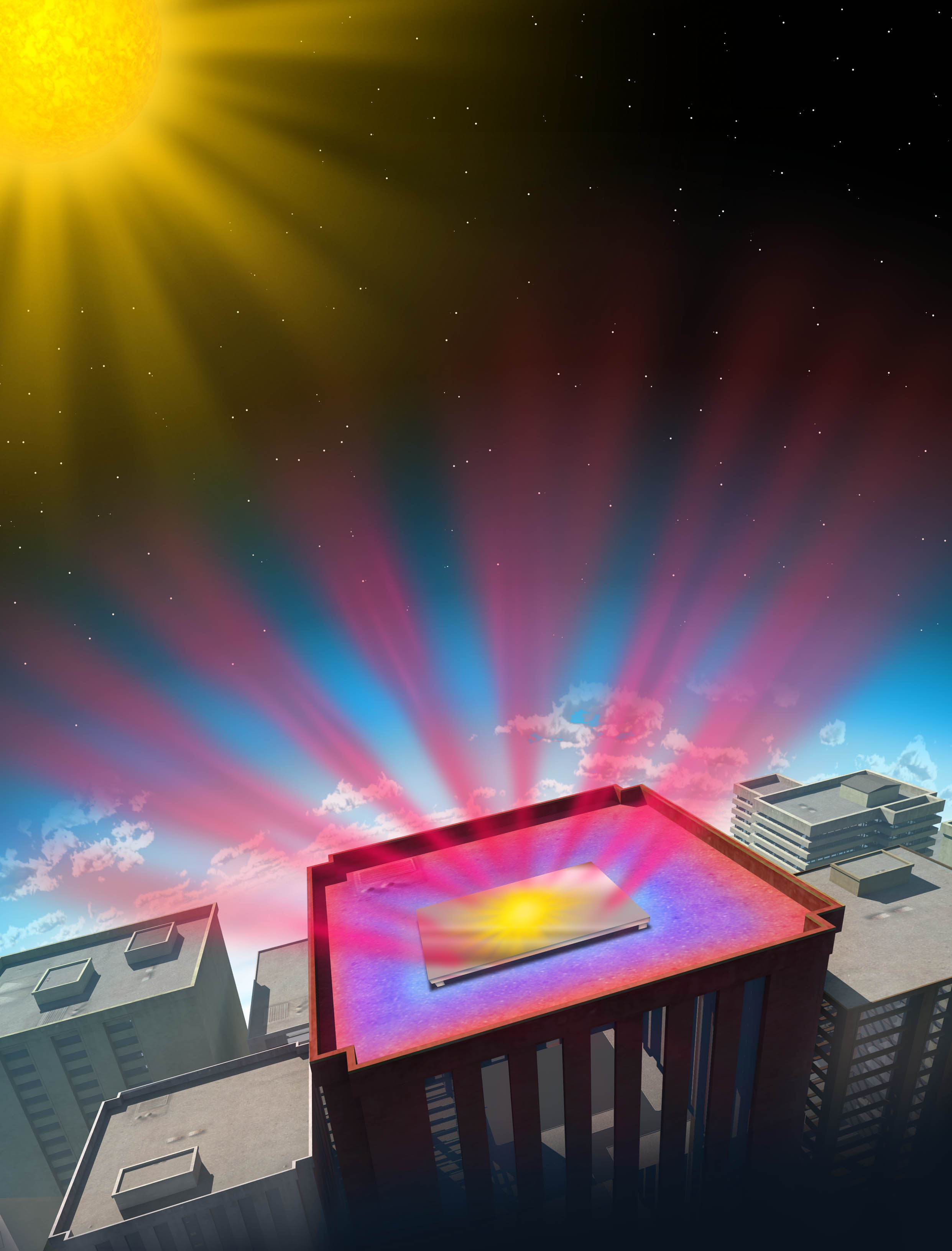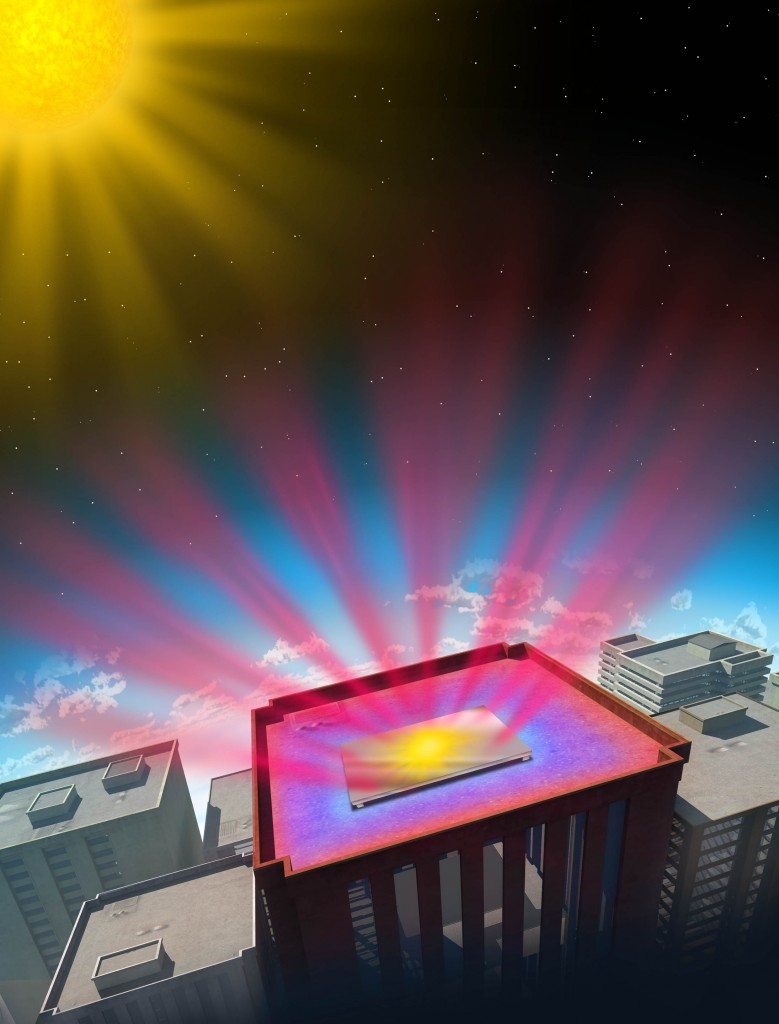December 8, 2014 – Researchers at Stanford University led by Professor Shanhui Fan are studying green photonics and applying what they learn to controlling the thermal emission properties of materials. Their latest discovery, a new material that reflects light and radiates heat away from a building surface and out of the atmosphere. The big breakthrough here is the use of passive cooling even in the presence of direct sunlight. And the potential exists for buildings using this material to be continually self-cooling without any energy input.
The material’s unique properties reflects light like a mirror and heat in frequencies that let it pass through the atmosphere using outer space as a heat sink. Fan and his team published their discovery in the last month in Nature. In their article, Passive radiative cooling below ambient air temperature under direct sunlight, they describe how the material uses passive cooling by reaching and maintaining a temperature 5 degrees Celsius (9 Fahrenheit) below ambient air “using a thermal photonoic approach.”
They call the material a photonic solar reflector and thermal emitter. It consists of seven layers of hafnium oxide and silicon dioxide. The combination reflects 97% of incident sunlight. In direct sunlight exceeding 850 watts per square meter (10.7 square feet), the photonic radiative property is equivalent to cooling power of 40.1 watts per square meter.
Using this material to cover a roof would eliminate the need for any other cooling technology. The material which is only two micrometers in thickness and today consists of a 51.6 centimeter square (8-inch square), will next be scaled to a full square meter. Ultimately Fan hopes to manufacture it as a plastic-like film for use on building roofs, exteriors and windows.


















